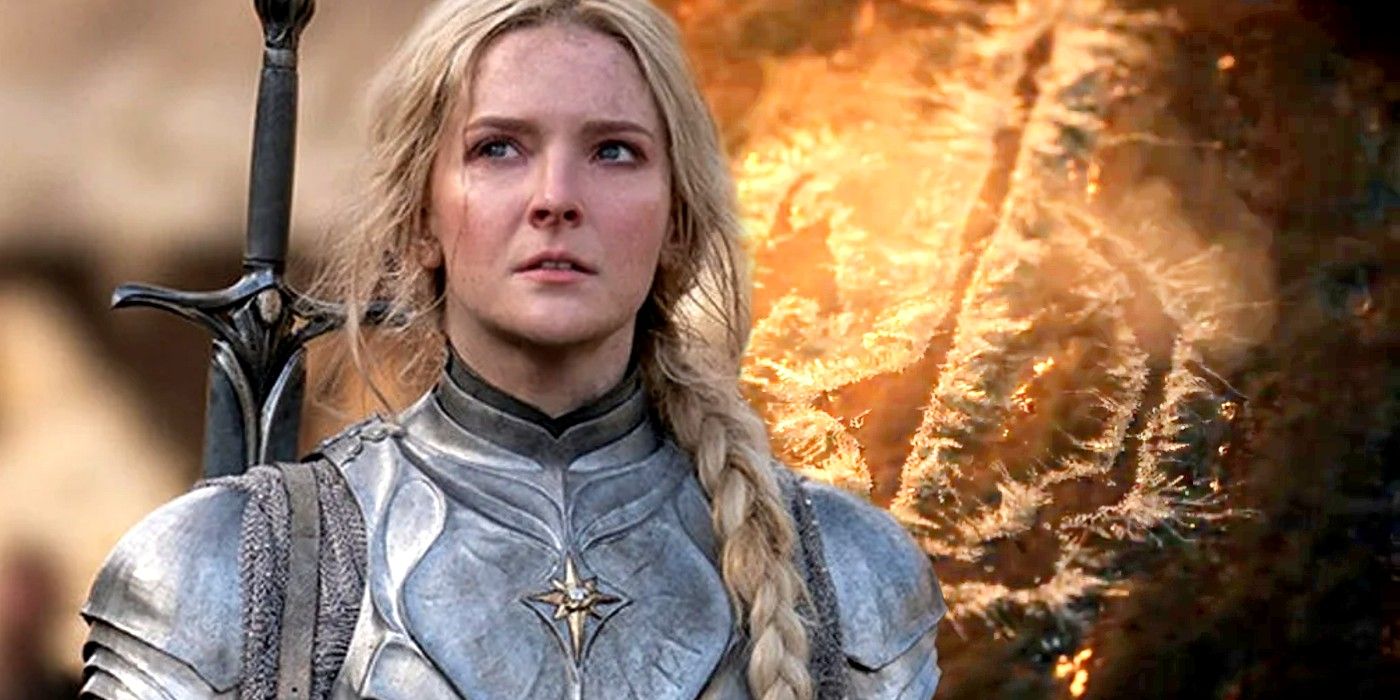
Warning: spoilers ahead for The Rings of Power episodes 1 & 2What on Middle-earth could Sauron’s sigil in The Lord of the Rings: The Rings of Power be? Here are the biggest theories. When Amazon’s The Rings of Power begins, Morgoth’s defeat is a long and distant memory that even the Elves have forgotten. J.R.R. Tolkien’s villain tasted defeat during the First Age’s War of Wrath, and although some of his orcs escaped alongside top lieutenant Sauron, a lack of suspicious activity stretching for centuries means most elves are happy to assume Sauron withered away alongside his foul minions.
Galadriel is not one of those elves. Morfydd Clark’s protagonist doggedly leads an expedition into the coldest, darkest corners of Middle-earth in search of Sauron’s hiding place. Her company never finds an evil sorcerer in black armor hiding behind a bookcase, but rifling through the northern wastelands does yield one, very literal, sign of Sauron’s existence. Galadriel happens across an evil mark enshrined onto an anvil in one of Morgoth’s old strongholds – identical to the mark branded upon her brother’s corpse. This very same image is then seen on the black sword hilt Theo finds hidden inside a Southlands barn, turning the sigil into a recurring motif for The Rings of Power‘s opening episodes.
The meaning of Sauron’s sigil eludes the wisdom of even Elrond and Gil-Galad, but fortunately for The Rings of Power‘s curious audience, Galadriel refuses to let the matter slide. Sauron’s brand is now a major mystery for The Rings of Power season 1, and without any direct comparison in Tolkien’s books, theories are already abundant.
The Rings Of Power’s Sigil Is The Eye Of Sauron
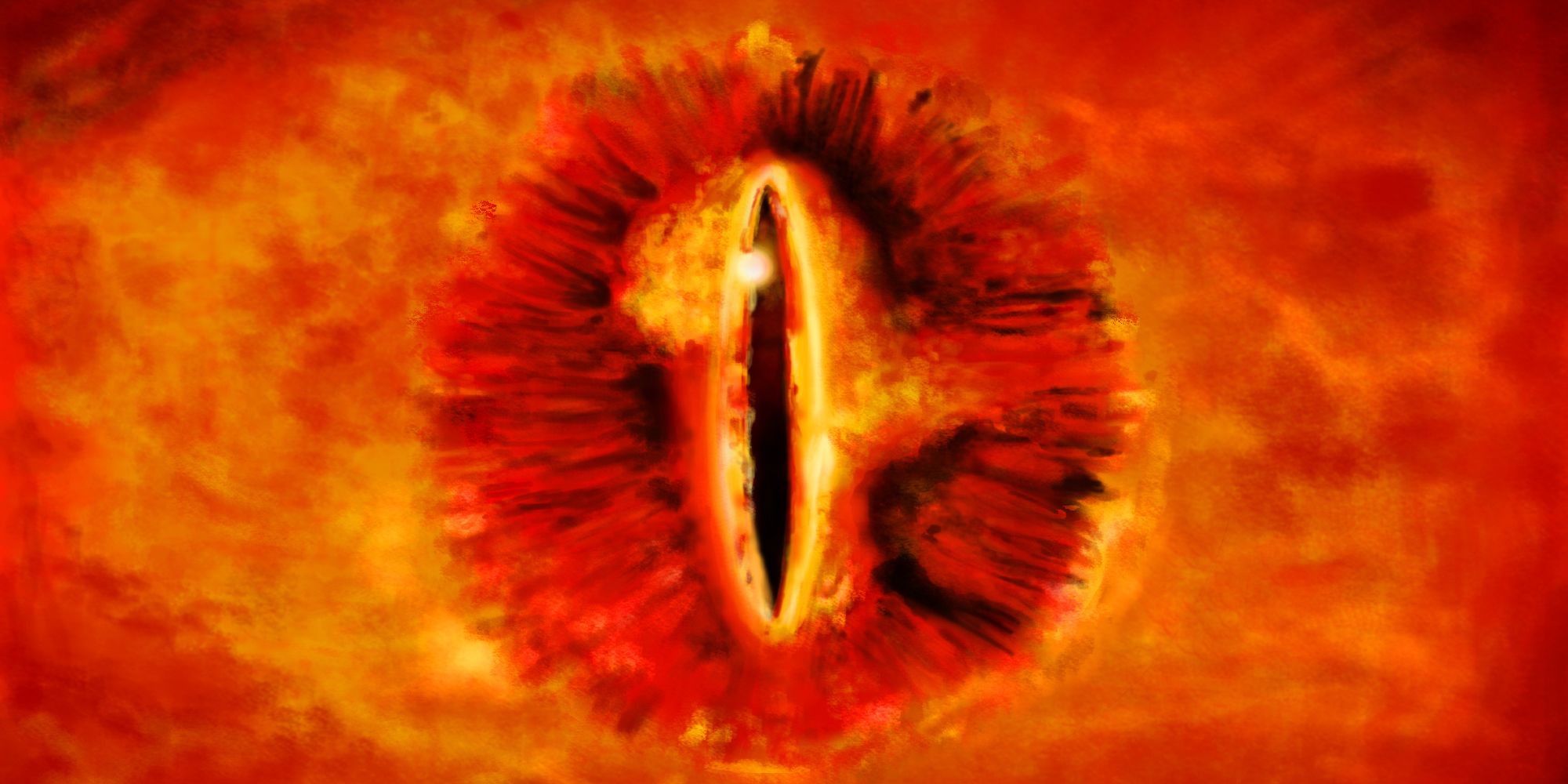
Most self-explanatory and easiest to explain of The Rings of Power‘s sigil theories is that the symbol is simply Sauron’s trademark – his Golden Arches or Starbucks mermaid, if you will. The brand upon Finrod’s corpse is the biggest clue. Even for Sauron, an elf of Finrod’s stature would represent a worthy scalp, and searing Galadriel’s brother with a personal mark serves to insult both the deceased and his entire race. It’s logical to assume such iconography might also be added to sword hilts held by Sauron’s minions, and maybe even the Forodwaith forge where orcish experiments were carried out. Such tactics are not uncommon among Middle-earth’s ne’er-do-wells – the White Hand of Saruman, for instance, was emblazoned across weapons and soldiers alike during the War of the Ring.
Supplementing the idea that The Rings of Power‘s sigil is Sauron’s personal mark, some have suggested the symbol looks a little like an eye. The Eye of Sauron is an image the Dark Lord adopts during the Third Age as a warning his weakened form is always watching (not a literal eye like in Peter Jackson’s movies). Sadly, not all the stars align. The Second Age may be a little early for Sauron to debut his eye-themed gimmick, and The Rings of Power‘s opening episodes deliberately conjure an aura of mystery around Saruon’s sigil, immediately suggesting it’s more than a mere logo.
Sauron’s Sigil Is Pointing Toward Mordor
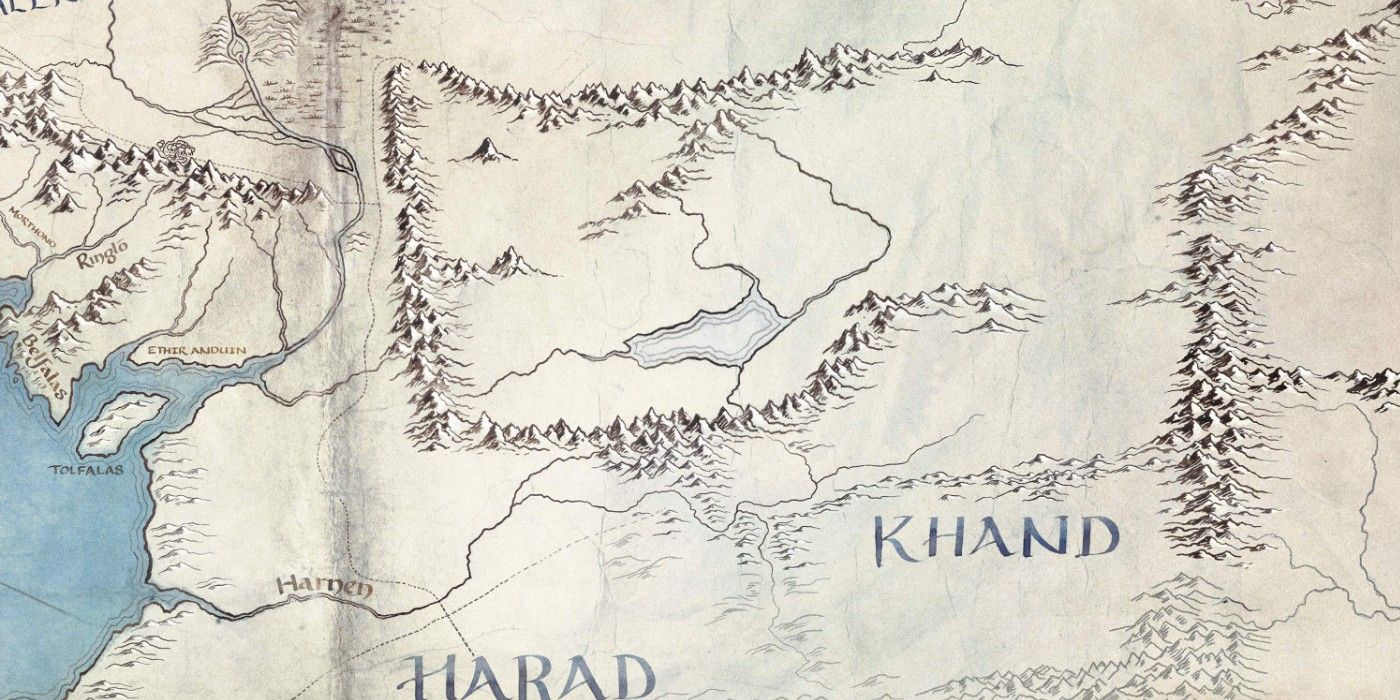
From one angle, Sauron’s sigil in The Rings of Powerlooks a bit like an eye; from another it looks a little like the basic outline of Mordor. Rotate the symbol ninety degrees and the circular ring begins to resemble Mordor’s mountainous borders, while the arrow shape in the center could be pointing toward the site of Barad-dûr. When Galadriel discovers the sigil in Forodwaith, she tells her company it’s a “trail for orcs to follow” left by Sauron. If that’s true, the sign could secretly be telling those followers where to gather. Perhaps Galadriel, Elrond and Gil-Galad haven’t yet figured out that Sauron’s mark corresponds very closely to the geography of a region in Middle-earth’s south.
In support of The Rings of Power‘s sigil-Mordor theory, marketing material has shown the Southlands region (home to Bronwyn’s village and Arondir’s elven outpost) is located very close to where Mordor will eventually sit on Middle-earth’s map. Tirharad is plagued by strange happenings throughout episodes 1 & 2, and given that Sauron first settles in Mordor during the Second Age, it’s plausible that his takeover has now begun via the sinkholes and poisonous grass, while his symbol leads forces of darkness toward their new home.
Depicting a map of Mordor would explain Sauron’s sigil being seared onto the anvil and etched into Theo’s sword hilt, but the theory works less fantastically for the brand on Finrod’s body. Not only would leaving directions on an elf’s corpse risk spoiling the secret, but Sauron killed Finrod before Morgoth’s defeat, when there was no need to regroup elsewhere.
The Rings Of Power’s Sigil Is Connected To Sauron’s Orc Experiments
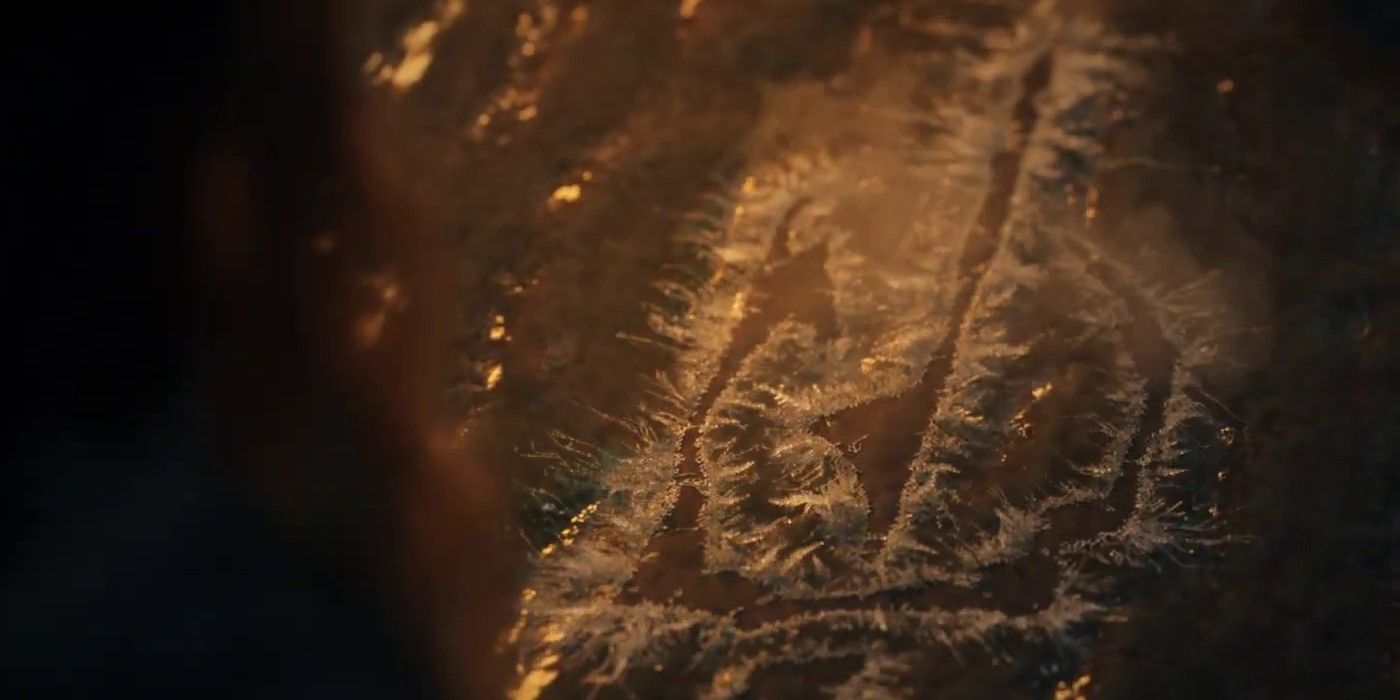
Galadriel and Elrond refer to Sauron’s mark as a sigil, but perhaps it’s closer to a magic rune. When Galadriel finds the mark at Forodwaith, the icy anvil is hidden within a concealed cell where Sauron and his minions conducted dark magic experiments on orcs. One unlucky subject even still clings to the chamber wall. Galadriel and her less-adventurous friend can’t quite figure out what shady business was conducted in these spiky halls, but Sauron’s symbol may hold the answer. If the rune is burned onto the anvil where the “dark sorcery of old” was performed, the rune itself could be part of the ritual. Sauron could’ve used Finrod’s dead body for science because orcs were borne from captive elves, and the rune’s presence on Theo’s sword hilt may account for the fiery blade reforging in its young owner’s hand.
A possible product of Sauron’s orcs-periments is the long-fingered creature that terrorizes Theo and Bronwyn in their home – a far cry from an ordinary orc in both appearance and strength. The purpose of Sauron’s sigil may be to transform a regular orc into whatever strange beast is doing his bidding in The Rings of Power.
The Sigil Will Bring Sauron Back
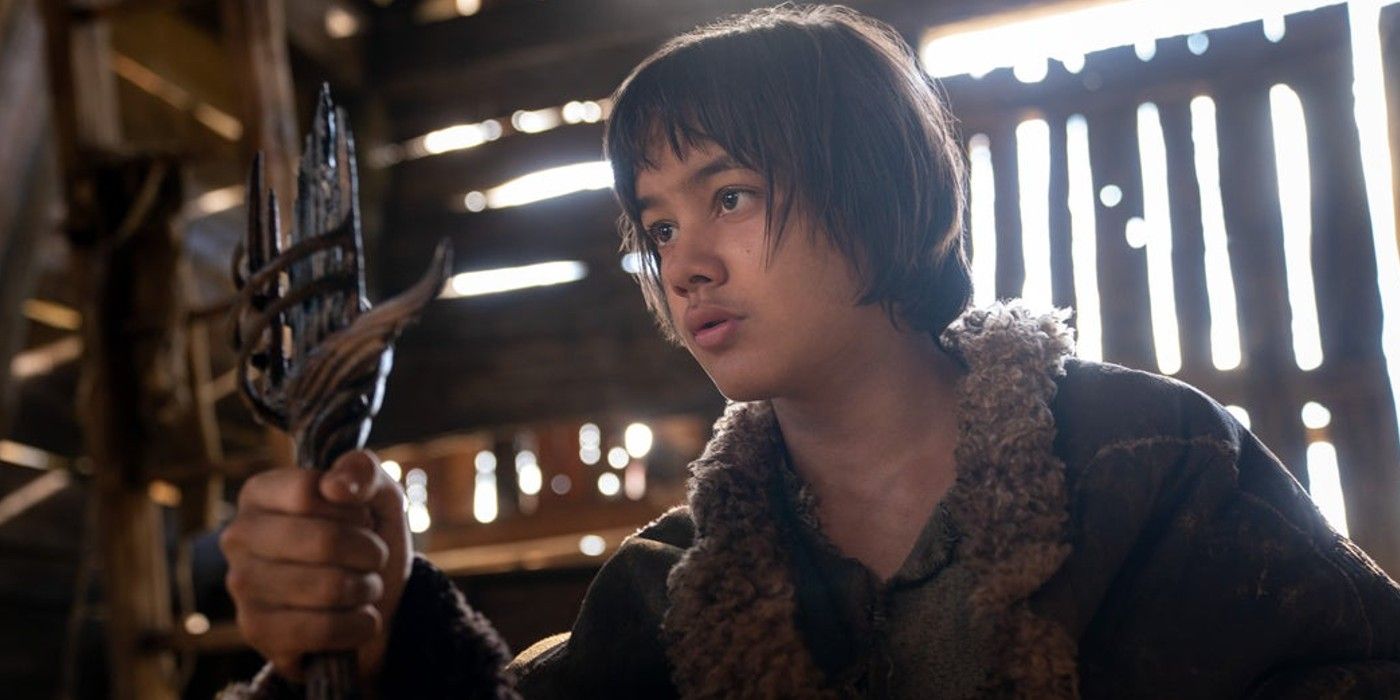
Sauron has disappeared completely when The Rings of Power begins. No one has sighted Morgoth’s favorite servant since his downfall at the end of the First Age, and even Galadriel’s centuries of searching across Middle-earth has yielded no results. Perhaps, then, Sauron isn’t physically in Middle-earth at all. J.R.R. Tolkien is somewhat ambiguous in regard to how and where the villain hid during his early Second Age blank spell. Did he vanish off-grid completely by disembodying himself from the mortal plane of Middle-earth altogether?
The Rings of Power‘s mysterious rune could be a magic conduit Sauron used to disappear and, when the time is right, it’ll return him to Middle-earth. The biggest clue here would be Theo’s strange connection to the black sword hilt, which The Rings of Power portrays very similarly to those who come into contact with the One Ring in The Lord of the Rings. Just like the Ring, the rune could be intrinsically tied to Sauron’s life force, and the entirety of Middle-earth has just been doomed by a young child stealing old trinkets from a barn…
The Lord of the Rings: The Rings of Power continues Thursday/Friday on Prime Video.





